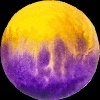Notice
Recent Posts
Recent Comments
Link
| 일 | 월 | 화 | 수 | 목 | 금 | 토 |
|---|---|---|---|---|---|---|
| 1 | 2 | 3 | 4 | 5 | 6 | |
| 7 | 8 | 9 | 10 | 11 | 12 | 13 |
| 14 | 15 | 16 | 17 | 18 | 19 | 20 |
| 21 | 22 | 23 | 24 | 25 | 26 | 27 |
| 28 | 29 | 30 | 31 |
Tags
- uitableview
- map
- Clean Code
- clean architecture
- Protocol
- ribs
- RxCocoa
- scrollview
- ios
- combine
- Observable
- 애니메이션
- Xcode
- rxswift
- 리팩토링
- Human interface guide
- collectionview
- swiftUI
- MVVM
- UICollectionView
- 스위프트
- UITextView
- uiscrollview
- tableView
- HIG
- swift documentation
- Refactoring
- 리펙토링
- 클린 코드
- SWIFT
Archives
- Today
- Total
김종권의 iOS 앱 개발 알아가기
[iOS - swift] systemLayoutSizeFitting 개념 (#AutoLayout 설정 후 바로 크기 알아내는 방법, #layoutFittingCompressedSize, #layoutFittingExpandedSize) 본문
iOS 응용 (swift)
[iOS - swift] systemLayoutSizeFitting 개념 (#AutoLayout 설정 후 바로 크기 알아내는 방법, #layoutFittingCompressedSize, #layoutFittingExpandedSize)
jake-kim 2023. 9. 10. 00:35systemLayoutSizeFitting 개념
- 오토 레이아웃 안에서, 현재 systemLayoutSizeFitting을 호출하는 뷰의 내부 크기를 계산한 결과를 반환해주는 함수
- AutoLayout은 보통 동적으로 크기가 정해지고 나서 layoutSubivews()와 같은 델리게이트 메소드에서 frame.size를 알 수 있지만 systemLayoutSizeFitting을 사용하면 autoLayout 기반으로 잡힌 구조에서 크기를 바로 구할 수 있음

- 파라미터에는 보통 2가지의 상수값을 사용
- UIView.layoutFittingCompressedSize
- UIView.layoutFittingExpandedSize

크기 옵션
- layoutFittingCompressedSize
- 레이아웃 시스템에게 뷰의 내용을 가능한 한 압축된 크기로 계산을 요청하여 뷰의 내용에 맞게 최소 크기를 계산
- 뷰의 최소 크기를 계산할 때 사용
- ex) UILabel 포함된 셀의 경우, 내용이 많이 들어가지 않을 때 사용
- layoutFittingExpandedSize
- 레이아웃 시스템에게 뷰의 내용을 가능한 한 확장된 크기로 계산 요청하여 뷰가 내용을 모두 수용하도록 크기가 조정
- 뷰의 최대 크기를 계산할 때 사용
- ex) UIlabel, UIImageView와 같이 내용을 충분히 표시하려면 확장된 크기가 필요한 경우에 사용
layoutSubivews() 없이 바로 크기 알아내는 방법
예제로 사용할 뷰 준비)

- 위에서 설명했듯이, viewDidLoad 안에서 autoLayout을 설정하고 바로 view의 frame을 프린트해보면 적용이 안된 상태
override func viewDidLoad() {
super.viewDidLoad()
let label = UILabel()
label.text = "iOS 앱 개발 알아가기"
let button = UIButton()
button.setTitle("button", for: .normal)
view.addSubview(containerView)
containerView.translatesAutoresizingMaskIntoConstraints = false
NSLayoutConstraint.activate([
containerView.centerYAnchor.constraint(equalTo: view.centerYAnchor),
containerView.centerXAnchor.constraint(equalTo: view.centerXAnchor),
])
containerView.addSubview(label)
NSLayoutConstraint.activate([
label.leadingAnchor.constraint(equalTo: containerView.leadingAnchor),
label.trailingAnchor.constraint(equalTo: containerView.trailingAnchor),
label.topAnchor.constraint(equalTo: containerView.topAnchor),
])
containerView.addSubview(button)
NSLayoutConstraint.activate([
button.leadingAnchor.constraint(equalTo: containerView.leadingAnchor),
button.trailingAnchor.constraint(equalTo: containerView.trailingAnchor),
button.bottomAnchor.constraint(equalTo: containerView.bottomAnchor),
button.topAnchor.constraint(equalTo: label.bottomAnchor, constant: 8),
])
print(containerView.frame) // <- .zero
}- 하지만 systemLayoutSizeFitting을 사용하면 위 타이밍에서도 autoLayout기반으로 내부적으로 계산하여 autoLayout이 적용되었을때의 크기 파악이 가능
print(containerView.frame) // .zero
print(containerView.systemLayoutSizeFitting(UIView.layoutFittingCompressedSize)) // (143.0, 62.333333333333336)- layoutSubviews()에서도 frame.size를 출력해보면 위에서 systemLayoutSizeFitting값과 동일
override func viewDidLayoutSubviews() {
super.viewDidLayoutSubviews()
print("viewDidLayoutSubviews:", containerView.frame.size) // (143.0, 62.333333333333336)
}정리
- AutoLayout으로 설정한 다음 뷰의 크기를 알고 싶을때 보통 layoutSubviews()에서 구하지만 다른 방법도 존재
- systemLayoutSizeFitting 을 사용하면 굳이 layoutSubviews()에서 크기를 구할 필요가 없어져서 간결하게 크기를 구할 수 있음
* 전체 코드: https://github.com/JK0369/ExSystemLayoutSizeFitting
* 참고
https://developer.apple.com/documentation/uikit/uiview/1622624-systemlayoutsizefitting
'iOS 응용 (swift)' 카테고리의 다른 글
Comments




